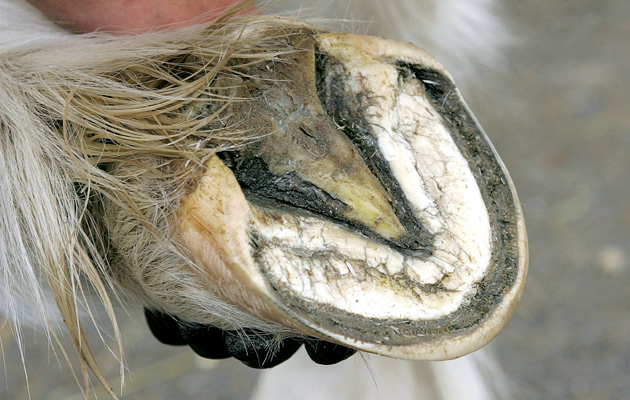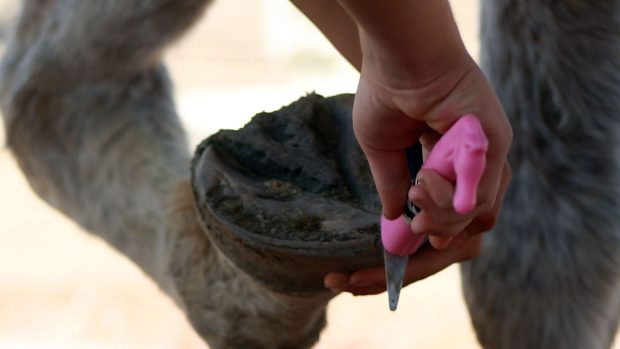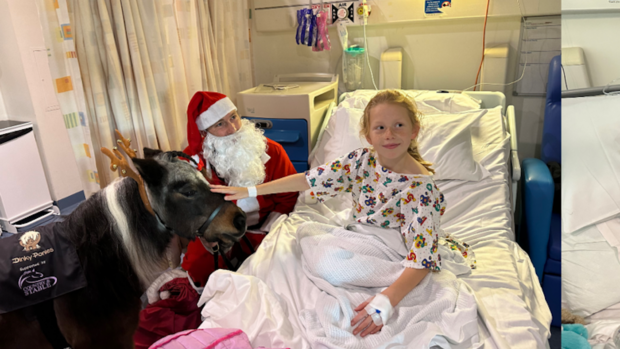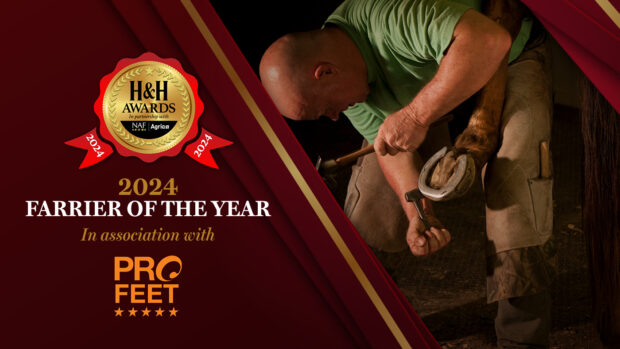Hoof abscesses are the most common hoof problem according to a new survey.
Research conducted over a month, ending 18 March, asked more than 600 horses owners about hoof problems and their relationship with their farrier.
Abscesses accounted for 47.92% of hoof issues, followed closely by hoof cracks and splits (47.74%) and loss of shoes between farriers’ visits (47.38%).
Bruising, thrush and laminitis were the other main common hoof ailments.
Only 15% of the horse owners surveyed reported that their equines had completely healthy hooves.
Finding a farrier isn’t difficult, the research by ArcEquine found, with over 80% of respondents said there were sufficient farriers in their area.
But nearly half of owners (46%) said they had had difficulties finding a farrier they can trust in the past.
When a horse owners finds a good, reliable farrier they hang on to them, the survey showed, with nearly half of respondents having worked with their current farrier for over five years.
There was no doubt as to the farriers’ expertise.
Over 88% of respondents said their farrier was ‘willing’ or ‘very willing’ to consult with the vet and over 93% said they trusted their farrier’s knowledge either ‘most of the time’ or ‘completely.’
Over 96% of owners said they would recommend their farrier to others.
The most common complaints horse owners voiced about their farriers were timekeeping, getting hold of them, being too busy for urgent visits and reluctance to change visit dates.
Over 13% of owners admitted farriers did grumble about muddy hooves and legs, but over 68% of those surveyed said they thought that their farriers wouldn’t have any criticism of them.
“We receive a lot of requests for information about how our ArcEquine Microcurrent Therapy can help with hoof injuries and associated issues, so understanding more about the most common problems and the relationship between horse owners, their farriers and vets will mean we can confidently offer the most appropriate advice,” said ArcEquine managing director Ian Thirkell.
Related articles:
- Are these Britain’s fittest farriers? *PICTURES*
- Hoof abscesses: what you need to know *H&H VIP*
- ArcEquine: what is it, how does it work and what is all the fuss about?
The ArcEquine Unit uses microcurrent therapy to promote repair and healing in the body (see H&H 12 March).




